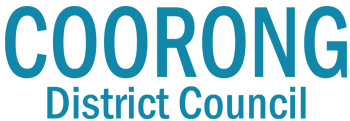Wastewater Management
Onsite Wastewater Management
Looking at building a new house or simply upgrading your existing wastewater system, then you will need to lodge an application to install or alter your wastewater system. You will also require approval if you are adding on extra bathrooms or laundries and if there is any alteration to the existing plumbing work. This is a requirement under the South Australian Public Health (Wastewater) Regulations 2013 and On-site Wastewater Systems Code.
There are many different types of on-site Wastewater systems including the septic tank and soakage system, aerobic systems, Community Wastewater Management Systems or CWMS (formerly called STED systems) and alternative systems such as the reed bed system, and composting toilets.
To apply for the installation of a new wastewater system, please use the “Application for an On-Site Wastewater Works Approval” which can be found here.
Information Sheet: What is required with each application?
Community Wastewater Management Systems (formerly STEDS)
The townships of Tailem Bend, Wellington East, Meningie and Tintinara area all serviced by a Council run CWMS. This means that you will need to install a septic tank with a minimum capacity of 3000 litres (which caters for 6 people) and then the overflow from the septic tank is directed into Council’s CWMS network and generally treated for re-use on our gardens and ovals.
As part of the CWMS service levy, Council desludges the septic tanks every 4 years. If you wish to know when your tank is due for desludging, contact Council for further information.
Septic Tank and Soakage System
This system works by the initial treatment of wastewater in the septic tank and this ‘semi-treated’ wastewater is then directed to underground trenches that rely on the water to be absorbed into the ground. The minimum size septic tank for a 6 person dwelling is 3000 litres and the size of your soakage system is dependent on the soil type on your allotment. A Wastewater Engineer will need to undertake soil testing and prepare a report outlining the whether the soil is suitable for a soakage system on your allotment and the area that is required. Some soils such as clay aren't suitable for soakage as the water doesn't drain adequately and you may need to look at alternative options. The septic tank needs to be desludged every 4 years to prevent solids entering the soakage trench which can lead to an early failure of the system.
Information Sheet: Maintenance of septic tank systems
Aerated Wastewater Treatment Systems (including sand filter systems)
Aerated Wastewater Treatment Systems, or Aerobic systems, treat the wastewater with chlorine so that it can be used on your garden area. The system needs to be checked quarterly by an approved servicing contractor to refill the chlorine and to ensure the pumps and aerators are working. Please note: Owners are not permitted to undertake their own maintenance.
A significant amount of irrigation area is required for these types of systems which must be landscaped and marked with a ‘reclaimed water – not suitable for drinking’ sign. A Wastewater Engineer will need to undertake soil testing and prepare a report that outlines the size of the irrigation area.
Note: Aerobic water can only be used on dedicated landscaped garden areas and cannot be used on any lawned areas or vegetable gardens.
Information Sheet: Maintenance of Aerobic Wastewater Treatment Systems
Installation of Alternative Wastewater Systems
There are a number of alternative wastewater systems that can be installed in accordance with AS/NZS 1547 such as the composting toilet, reed bed systems, ETA trenches, Wisconsin mounds and other hybrid alternatives, which are now approved by Council. These are listed on the application form.
These sorts of systems will still require a wastewater engineer to prepare a report outlining the soil profile of your allotment and the suitability for that wastewater system to
For further information on these systems contact Council’s Environmental Health Officer.
Renovating your house?
It is a requirement that an Application for Wastewater Works Approval must be lodged for any alterations to wastewater systems, including for additions such as ensuites, upgrades, changing placement of irrigation areas etc. When lodging your Application for Wastewater Works Approval, please clearly illustrate which components of the system are existing and which are forming part of the new application. This makes for a seamless assessment and approval process and ensures that your application is approved with fewer delays.
Compulsory Inspection Stages
Council must be notified at least 24 hours prior to the following stages have been reached to enable an inspection to be undertaken.
- Underfloor plumbing
- Installation of septic tank and drain
- Installation of the irrigation area or soakage
- Connection to the CWMS
Failure to notify Council of any of these stages may result in expiation fines being issued.
Caring for your wastewater System
Please don’t flush wipes down the toilet system. Place them in a bin instead. Flushable wipes, even though they are marked ‘flushable’, do not break down quick enough in the septic tank and cause blockages.
CWMS System no Wipes Brochure (391 kb)
(391 kb)
Standard Customer Sale Contract
In accordance with the requirements of the Water Industry Act 2012, Coorong District Council is required to have in place a Standard Customer Service Contract for it's Non-drinking Water Retail Service and Community Wastewater Management System Retail Services.
Standard Customer Service Contract (666 kb)
(666 kb)
For additional information about Wastewater systems and inspections, please contact Council’s Environmental Health Officer on 1300 785 277 or by email at council@coorong.sa.gov.au
